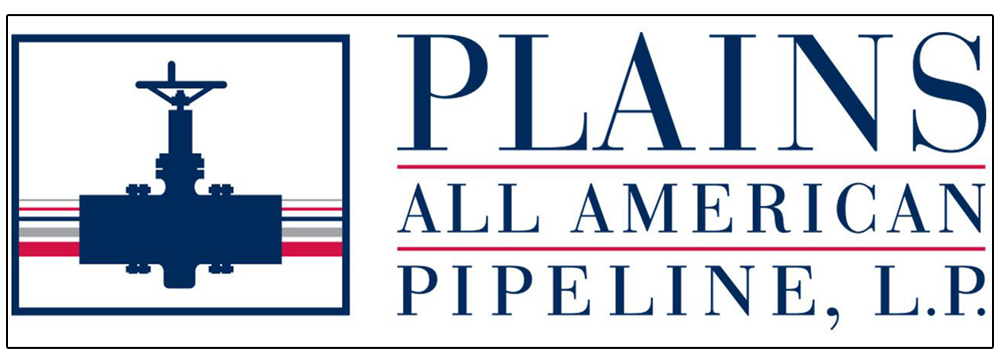Shale Daily | Infrastructure | NGI All News Access
Plains All American Oil Demand Outlook Clouded by Coronavirus, but Early Signs of Price Recovery
Drilling cuts and producer shut-ins amid historically weak oil demand forced Plains All American Pipeline LP to write down the value of its assets and swing to a steep first quarter loss.

The Houston-based pipeline and storage operator’s chief executive said the sudden pullback in energy demand and basement-level prices for crude oil imposed by coronavirus fallout also necessitated substantial spending cuts and asset sales.
Executives said during an earnings call Tuesday there are early signs of oil-price recovery as gasoline demand ticks up, a potential positive for future associated natural gas production.
But the near-term outlook is murky, clouded by shaken markets, economic recession and the uncertainty of the pandemic’s ultimate duration and severity.
The “pandemic has led to an unprecedented energy supply and demand imbalance,” said Plains CEO Willie Chiang. “The North American energy supply chain has responded swiftly with significant reductions to refinery utilization, drilling and completion activity.”
This is driving wellhead prices to historic lows and causing significant levels of voluntary shut-ins that Plains expects “will cause production levels to decline in the very near future in most, if not all, key basins,” Chiang said.
“As the coronavirus escalated into a global pandemic, the associated societal mitigation actions, including shelter-in-place orders and the resulting energy demand disruption, accelerated at an unprecedented pace and magnitude.”
The CEO said that the majority of estimates for year/year global oil demand destruction for the second quarter range from 20% to 25%, and roughly 10% for the full year.
[Want to see more earnings? See the full list of NGI’s 1Q2020 earnings season coverage.]
Global efforts to curtail production since the onset of the pandemic will help with the long-term process of rebalancing supply with demand, according to Chiang. But “these cuts alone are not enough to offset near-term demand disruption” and ultimately, recovery is largely dependent on a broader easing of the public health crisis’ impacts and the pace of a related economic rebound.
“The overhang of inventory for both crude oil and refined products, coupled with the potential for a more gradual recovery, suggests that a price recovery may be extended into 2021,” Chiang said.
“With this backdrop,” he continued, “we’re now forecasting on a year/year, exit-to-exit basis that the Permian crude oil production in 2020 could be down 15% to 20%, reaching trough levels in June and flattening out the second half of this year. It remains too early to call Permian growth trajectory for 2021, but we expect it to be lower than what we internally forecasted at the beginning of the year pre-coronavirus.”
All of that noted, management said there are early indications of price recovery, as social distancing measures start to ease and drilling reductions in the Permian get underway.
“Currently, prices are rallying, which suggest things could change,” said Jeremy Goebel, Plains Executive Vice President, Commercial.
That sentiment also was noted on earnings calls with Valero Energy Corp. and Phillips 66, which produce and market transportation fuels.
Over the second half of March, for example, Valero’s gasoline demand was about 55% of what the company views as normal. “For the first couple of weeks in April, it seemed to stabilize around that level, but now we’re starting to see demand pick back up already,” Chief Commercial Officer Gary Simmons said.
Though situated within a period of exceptional volatility, West Texas Intermediate crude oil futures for June delivery advanced 20% to $24.56/bbl on Tuesday, marking five straight sessions of gains, before falling Wednesday.
“Yes, we will see more painful announcements, but we are seeing a bottom,” said Bernadette Johnson, vice president of strategic analytics at Enverus. “The world is still highly reliant on hydrocarbons, and that isn’t about to change in a six-week period.”
Findlay, Ohio-based Marathon Petroleum, the largest U.S. oil refiner, also reported this week that gasoline consumption is beginning to rebound.
“We’ve seen steady recovery since mid-April, with 5% to 15% improvement, really dependent upon the region, off of the lows. … And we expect to see continued improvement as more of the states continue or start the reopening protocols over the next couple of months,” Timothy Griffith, president of Marathon’s Speedway division, said during the company’s earnings call.
Plains, meanwhile, posted a 1Q2020 loss of $2.8 billion (minus $3.98/share). That compared with a $970 million ($1.20) profit a year earlier. Plains wrote down the value of its assets by nearly $3.2 billion in the first quarter, driving the loss.
The pandemic’s consequences “represented a trigger event requiring an interim assessment of our goodwill balances,” CFO Al Swanson said on the call. The company performed a quantitative impairment test as of March 31 and, as a result, recorded a full impairment of its $2.5 billion goodwill balance. It also recorded additional noncash impairments totaling $655 million.
In April, Plains curtailed its planned capital expenditures, including $750 million from its capital budget and $525 million in distributions to shareholders. It now plans to spend $1.55 billion on new projects through 2021.
“We also continue to pursue and capture capital and cost reductions throughout the organization and our supply chain as well as additional non-core asset sales,” Chiang said.
Deferred projects, including the Red Oak Pipeline, could add to savings. Red Oak, a joint venture with Phillips 66, would move crude from the Midcontinent to the Gulf Coast via the Permian Basin.
Plains is aiming for $600 million in asset sales this year. To date, transactions representing about $440 million have either closed or are pending closing under definitive agreement.
“We continue to target a total of $600 million in non-core asset sales in 2020, but we do acknowledge that this number could be more difficult to achieve in the current environment and could slip into 2021,” Chiang said.
© 2024 Natural Gas Intelligence. All rights reserved.
ISSN © 2577-9877 | ISSN © 2158-8023 |
